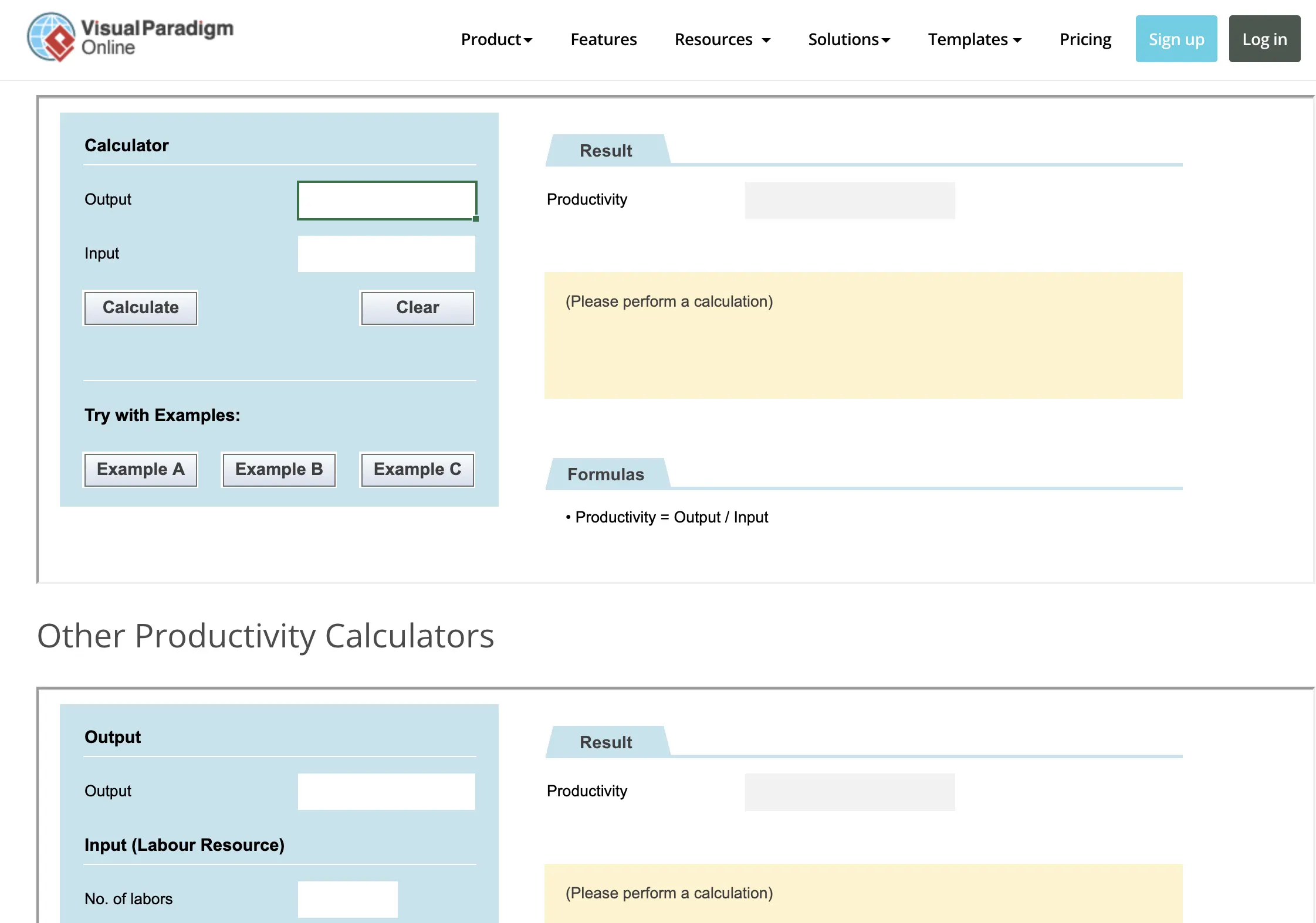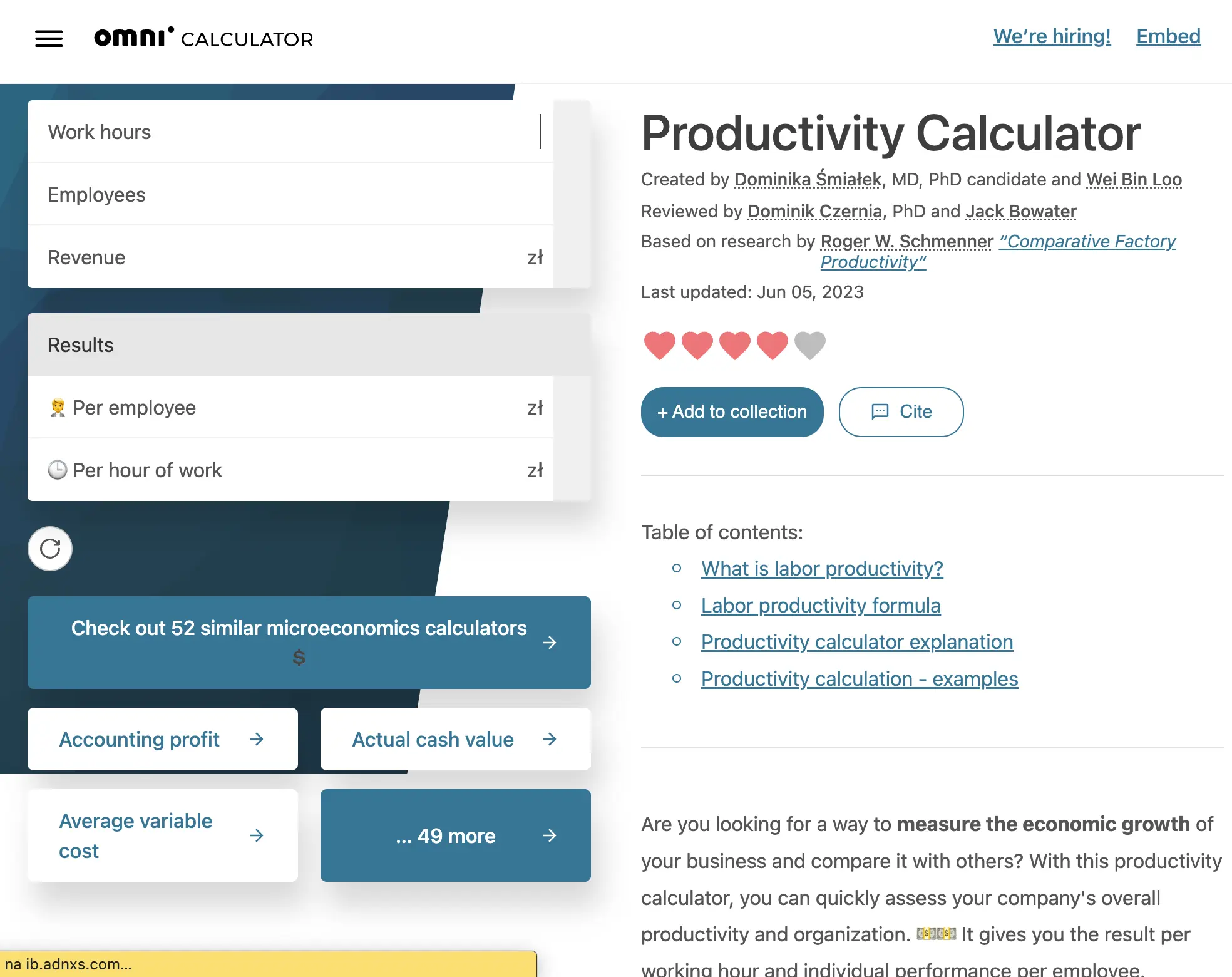Maintaining productivity and efficiency is essential for personal and professional success in today’s fast-paced work environment. One approach to boost work performance is through the use of productivity calculators. These tools provide valuable insights by helping individuals and organizations evaluate their current output and identify areas for improvement. With various efficiency formulas and methods available, choosing the most suitable one for specific productivity goals is crucial.
Productivity calculators employ various metrics, such as production efficiency formulas, labor productivity calculators, and efficiency percentage measurements, to determine areas where improvements can be made. By understanding how efficiency is calculated and learning how to calculate efficiency rates, individuals can better manage their time and resources, ultimately leading to increased overall effectiveness.
This article will discuss the top three productivity calculators and their features, demonstrating how they can help enhance workplace performance. By effectively utilizing these tools, employees and businesses can achieve their objectives, optimize processes, and increase productivity.
What is Labor Productivity?

Labour productivity is a key metric for assessing a workforce’s efficacy and efficiency. It describes the hourly production of a nation’s or an organization’s economy, calculating the worth of goods or services in terms of the number of hours workers put in. Numerous formulas and techniques may be used to assess labor productivity, which is essential for organizations to examine and enhance their production process.
Calculating labor productivity often involves dividing the entire output by the total input, typically expressed by the number of hours worked or employees. This straightforward method clearly demonstrates the production level in terms of dollars per hour. For instance, if a business makes $80,000 per week and employs 1,500 people, its labor productivity is 53, which means it makes $53 per hour of work.
When analyzing productivity levels, businesses often rely on metrics like efficiency percentage. The efficiency percentage formula divides the actual output by the maximum possible output, multiplying it by 100. This method helps organizations assess their overall performance and optimize their resources and workforce.
Efficiency Formula

Total Output and Total Input
The efficiency formula is a valuable tool for understanding how well a process or system is functioning. It measures the ratio between the outputs and the inputs. The basic formula for calculating efficiency is:
Efficiency = (Total Output / Total Input) * 100
In the context of productivity, this can be represented as a productivity formula, where the output (e.g., products or services) is divided by input (e.g., labor hours, number of employees). With the help of a labor productivity calculator, you can determine a company’s efficiency rate and identify areas for improvement.
Deconstructing the Formula
To better understand the efficiency formula, let’s break it down into its key components:
Total Output: The products or services generated by an organization or process. Higher output is desirable, minimizing waste and maximizing results is essential.
Total Input: The resources, such as labor hours, contribute to the production process. Streamlining inputs helps improve productivity and efficiency, as fewer resources are used to achieve the desired outcome.
Efficiency Percentage: Dividing the total output by the total input and multiplying by 100. A higher efficiency percentage indicates more effective performance.
Overall Equipment Efficiency
Another important aspect of efficiency is Overall Equipment Efficiency (OEE). OEE is a comprehensive measure of how efficiently a manufacturing process uses its resources, considering factors such as availability, performance, and quality.
To calculate the OEE, you can follow these three steps:
- Calculate Availability:
(Operating Time / Planned Production Time) * 100 - Calculate Performance:
(Total Production Count / Maximum Possible Production Count) * 100 - Calculate Quality:
(Good Units Produced / Total Units Produced) * 100
Finally, multiply the results of the three calculations:
OEE = Availability * Performance * Quality
The efficiency formula and productivity tools such as a labor productivity calculator, can help identify areas for improvement and ultimately boost efficiency. Integrating practices like meditation, using a planner, and addressing sleep deprivation can improve employee well-being and prevent burnout, ultimately contributing to a more productive and efficient organization.
Examples of Productivity Calculators
In this section, we will discuss three productivity calculators that can help boost efficiency in the workplace. These tools help measure the efficiency of an individual or a group. Let’s explore each calculator and its unique features.
Rescue Time

Rescue Time is a productivity tool that tracks how you spend your time on your computer and provides detailed reports. Analyzing the time spent on different activities helps you make data-informed decisions to boost productivity and avoid burnout. Rescue Time offers a free version with limited features, while the premium plan provides additional functionalities, including tracking offline activities and setting productivity goals.
The tool works by monitoring the applications and websites used during work hours. It categorizes them into productive and non-productive tasks based on your preferences. Rescue Time then calculates a productivity score, giving insights into areas for improvement.
Visual Paradigm

The Visual Paradigm productivity calculator is a free online tool that simplifies calculating productivity based on input values. The calculator uses the efficiency formula: Productivity = Output / Input. The output is often measured in revenue, units produced, or completed tasks, while input could include labor hours, cost, or resources.
This calculator allows you to analyze your efficiency by simply inputting the required information. By comparing this metric over time, you can identify trends and make necessary adjustments to enhance work or workplace culture productivity.
Omni Calculator

The Omni Calculator is another free online tool that calculates productivity depending on your input data. It also uses the efficiency formula, Productivity = Output / Input, to help determine your performance.
One unique feature of the Omni Calculator is its ability to incorporate various productivity factors such as sleep deprivation, meditation, and workplace motivation. It allows you to evaluate the impact of these factors on your overall efficiency, helping you establish a better work-life balance and avoid burnout.
In conclusion, these three productivity calculators offer valuable insights into improving efficiency and can be a helpful addition to your productivity toolkit. By monitoring and analyzing your productivity with these tools, you can make informed decisions to optimize your work routine and enhance overall performance.
Conclusion
In summary, finding the right productivity calculator enhances organizational efficiency. Selecting a tool that is tailored to your needs, whether it be a labor productivity calculator or a tool to calculate production efficiency, can streamline your workflow significantly.
These calculators, coupled with an appropriate efficiency formula, empower decision-makers to optimize their operational efficiency and improve performance across diverse sectors. It is equally important to understand how efficiency is calculated so that the obtained results can be effectively leveraged to maximize productivity and outcomes
FAQ
Are these productivity calculators compatible with different devices?
Yes, these calculators can be accessed and used on various devices, including computers, smartphones, and tablets. Some may require specific software or apps, so check the compatibility before use.
Do I need any specialized knowledge to use these calculators?
No, these calculators are designed to be user-friendly and require no specialized knowledge. Simply input the relevant data, and the calculators will generate the results.
Can I customize these calculators to fit my specific requirements?
Some productivity calculators may offer customization options, allowing you to tailor them to your unique needs. Explore the settings or options within each calculator to see what customization features are available.


